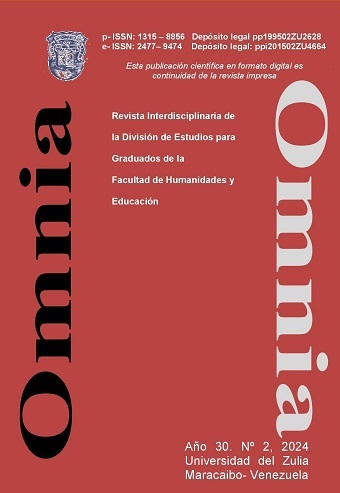Wayuu myth: Wolunka and his literary analysis
Abstract
The purpose of this research has been to analyze the main symbols in the Wolunka myth wayuu. The investigation is justified, since it intends to explain some symbols present in the Wolunka myth, and its manifestation in the Wayuu culture. The research approach is qualitative and the method used is hermeneutic. It is concluded that the Wolunka myth transcended as an expression of oral narration, giving a cosmogonic explanation of the Wayuu genesis through symbols that represent cultural practices that persist today. As such, a call is made for the new generations belonging to this ethnic group to recover sensitivity for the interpretation and preservation of Wayuu myths, when importance is given to the expressions of the culture to which they belong, the person knows himself more and understands their environment, achieving rapport, appropriation and cultural identification
Downloads
References
Beuchot, Mauricio (2004). “La semiótica”. Fondo de Cultura Economica, México. https://doi.org/10.15581/009.37.31663.
Colectivo Winpirai (2021). “Mito Wolunka”. http://www.notiwayuu.com/2021/12/wolunka-la-mujer-con-la-vagina-dentada.html.
Figueroa, Nicolás Polo (2015). “La cultura y el sistema de normas Wayuu”. Escuela de Derecho de la Universidad Sergio Arboleda, Colombia https://www.redalyc.org/articulo.oa?id=669770728005
García Márquez, Gabriel (2007). “Cien años de Soledad”. RAE y ASALE, Colombia.
Meletinski, Eleazar (1993). “El mito”. Editori Riuniti, España https://es.scribd.com/doc/280559065/230683286-El-mito-Eleazar-Meletinski-pdf.
Mercado Epieyuu Rafael Segundo (2020). “Tiko’u Epinayu”. Revista de Estudios Interculturales desde Latinoamérica y el Caribe Facultad Ciencias de la Educación, Universidad de La Guajira. Colombia. file:///C:/Users/User/Downloads/Dialnet-TIKOUEPINAYUUALaMemoriaDelProfesorFranciscoJustoPe-8729494%20(1).pdf.





